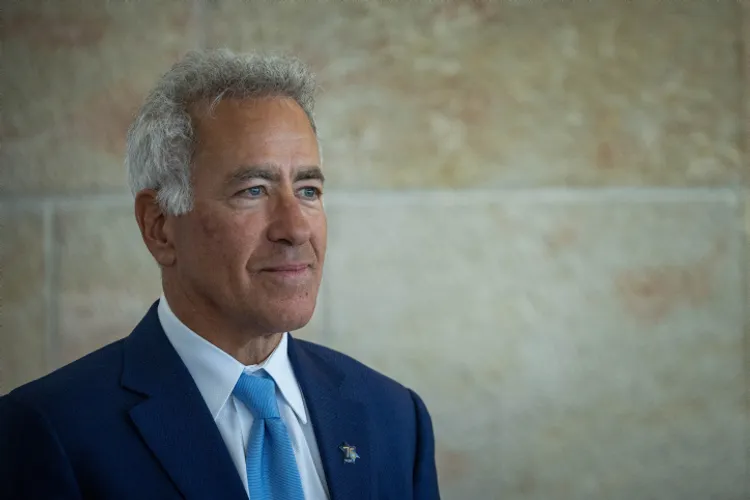
Networking Lessons from Hollywood A-Listers
Networking Lessons from Hollywood A-Listers
October 29, 2010
Harvard Business Review — Networking matters — but that truism, like so many others, verges on the meaningless. To what extent and what type of networking really takes someone to star status? Work I’ve done with Gilad Ravid of Ben Gurion University of the Negev in Israel on celebrity social networks helps to reveal some of the fundamentals of how elite talent pools organize themselves and provides some lessons we can take from them and apply to our own, decidedly less glamorous lives.
Over the course of one year, Gilad and I studied the social events within the entertainment industry using Getty Images, the largest, most comprehensive photographic agency in the world. Getty’s photos document everything from film premieres to the Vanity Fair Oscar party to art openings and charity galas. We cataloged the caption information of over 600,000 archived photographs, documenting almost 12,000 events around the world. We ran social network analysis that allowed us to see who was in each of the photos, who they were photographed with, at what event, in what city and how many photos were taken of each star. We then looked at the social networks of the top 20 “industry-prestige” stars (those whom Hollywood executives rank as the most influential in drumming up financial resources and box office receipts, and bringing other talent on board) to find out if those stars—the A-list—exhibit unique social networks compared to the broader celebrity network.
The celebrity network tells us about a particular type of talent and how this type of talent preserves its position, but understanding how talent works in Hollywood is a good proxy for understanding how talent works more generally.
Some facts about the A-List
Stars benefit from the “Matthew effect”
Alluding to a quote from the Gospel of Matthew, the sociologist Robert Merton coined the term the “Matthew effect” to describe scientists whose earlier success enabled them to become infinitely more successful than fellow, unknown scientists who were simultaneously coming up with the same ideas and publishing similar papers. The same phenomenon explains how stardom works in Hollywood. Members of the A-list network only spend time with one another. Our database captures the social networks of almost 7000 people, yet A-list members manage to spend most of their time attending events with the same 20 other people. Of course, this exclusiveness is an excellent strategy because it preserves and perpetuates their status and becomes self-reinforcing. The A-list keeps showing up at the same prestigious parties over and over again. But the B-list and C-list are not at those parties, and thus the A-list remains the A-list, no interlopers allowed.
Certain qualities seem to further reinforce the possibility of getting ahead
True superstars also have distinctive social and demographic, or “non-network”, characteristics in addition to their unique networking style. For example, they tended to get a lot of media attention and traveled around the world more than others within the celebrity network.
The A-list requires a quantum leap
Crucial moments rather that long hours catapult a talented person to star status: Winning an Oscar, starring in a box office blockbuster or marrying an A-lister gets you that ticket to the Vanity Fair Oscar party. Most stars and aspiring stars follow the adage of work hard and then work even harder. Any top CEO, Hollywood film actor or entrepreneur puts in many, many hours. And thus we are deceived into thinking that the work is the key to their success. Hard work is necessary, but it’s not sufficient. In Hollywood terms, toiling away on a TV series doesn’t beget long term success or an invite to the Vanity Fair Oscar party where one hobnobs with top directors who may cast them as leads in the future.
What you can do about it
Arbitrage talent
Penetrating the A-list is virtually impossible without some kind of lucky lightening strike. So if you’re searching for underpriced talent, looking outside of the network may prove a rich source. The A-list and its accoutrements of obvious star qualities can often mean less obvious but equally talented individuals go unnoticed. In finance, graduating from an Ivy League or “Oxbridge” is the non-network characteristic most commonly found in elite talent pools but, for instance, that shouldn’t prevent employers from looking at top graduates from state universities. This is where circumventing the A-list might be beneficial, and headhunters can facilitate this shortcut.
Headhunters seek out the “mispricing”: the talent in one company who is being overlooked and can be poached for a bigger job at another firm. Part of this “mispricing” may be that particular talent doesn’t demonstrate all the attributes of conventional stars, but that doesn’t mean they’re not really good. You do have to know what you’re looking for, and then you have to face the tradeoff of whether you want to pay the premium the obvious talent or dig a little deeper.
Show up
Personally, most of us have dismal, if not fictional, prospects for accessing the A-list. But social networks drive success: 80 percent of life, as Woody Allen famously said, is showing up. Thus, while we can’t ever aim to get onto the A-list, we can draw from our understanding of their network to position ourselves to get ahead in our own careers and to connect with the people in our “relative A-list.” Social connections drive careers, deals, and exchanges in all industries. Getting ahead in all walks of life means making friends with those who make the call on who is the best and the brightest. In business terms, IQ is only a ticket to the poker table. CEOs and managers are vetting talent that has already passed a certain threshold of intelligence. Many are making decisions that are less about SAT scores and more about whether they like someone and want to work with them. While the Vanity Fair Oscar Party or the annual retreat with the CEO may seem a distant and unrealizable goal, it’s worth hitting the social scene for the off chance of meeting the gatekeepers to such events.
Ironically, I am writing this post from my hotel room at an academic conference. I probably should be downstairs in the lobby arranging coffee dates.



